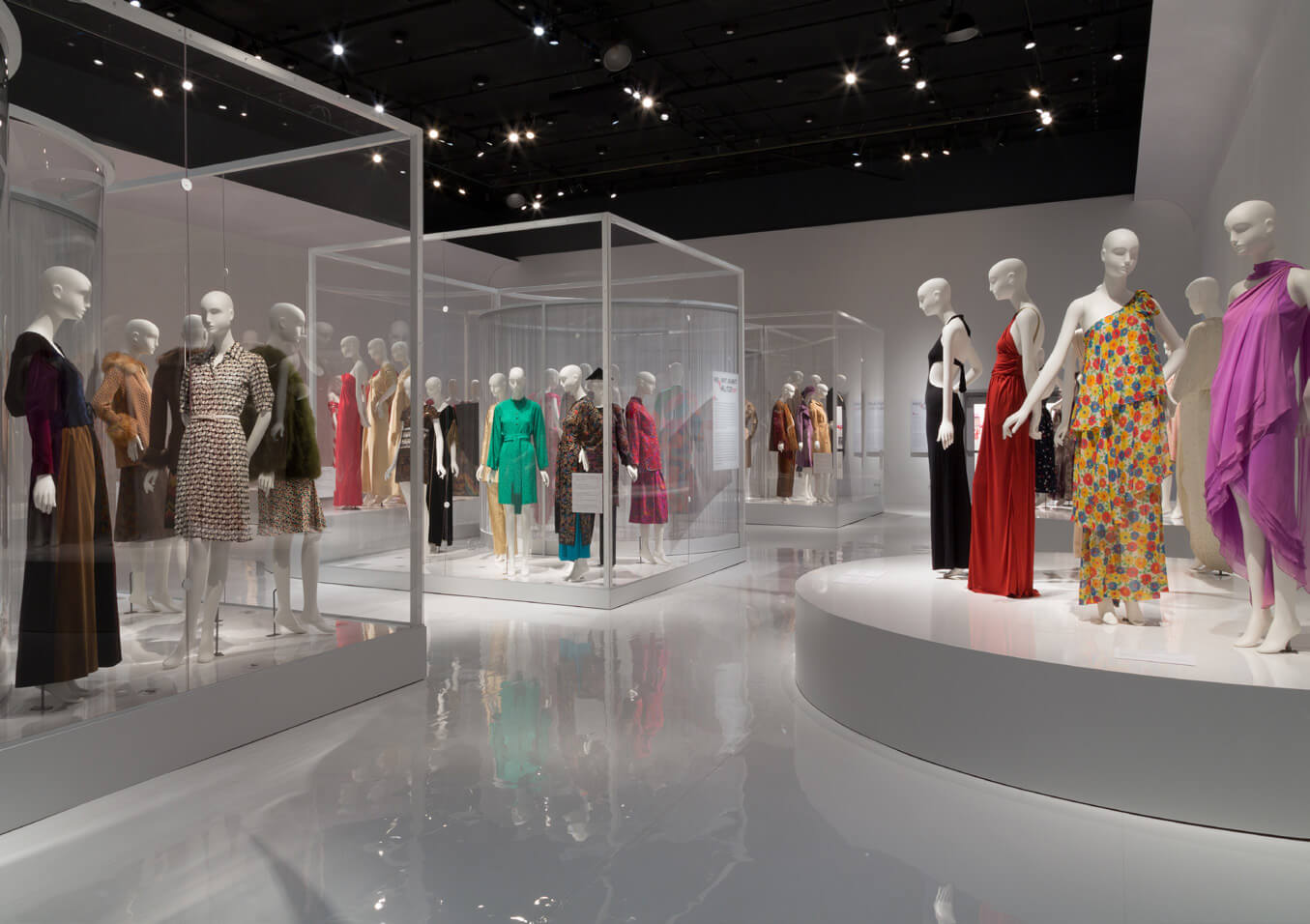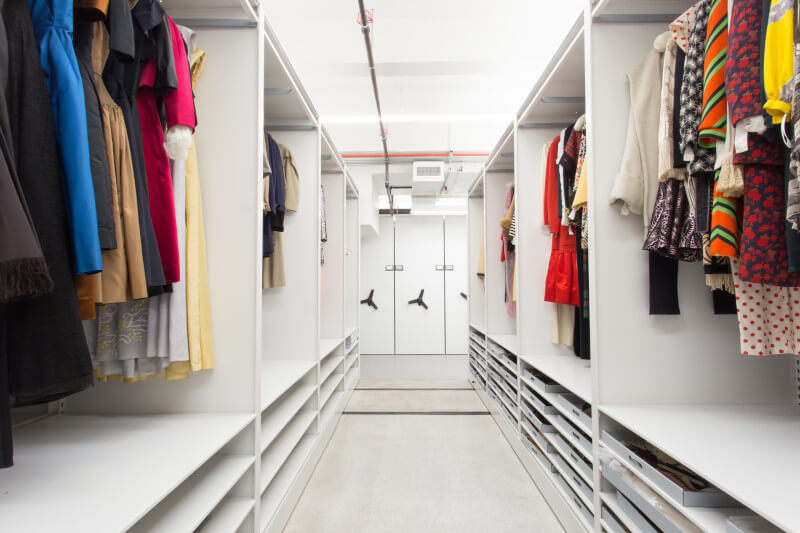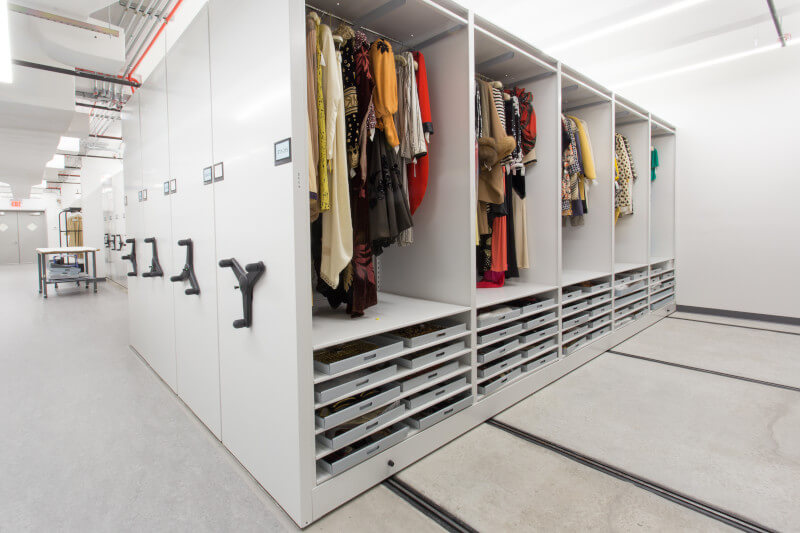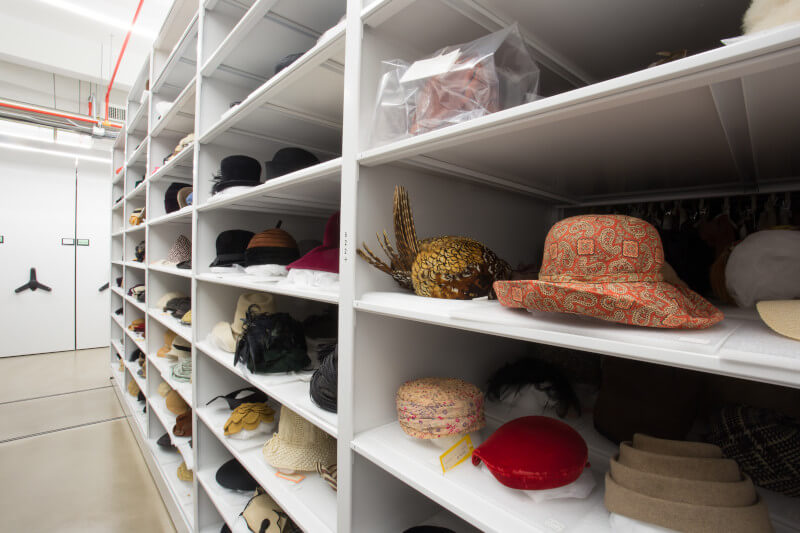A New Storage Area Where Everything is Beautifully Displayed, Easy to Access, and Safely Stored
Located in the heart of Manhattan, the Fashion Institute of Technology (FIT) is an internationally recognized college for design, fashion, art, communications, and business. The Museum at FIT is open to the public and creates exhibitions with its extensive collection of 50,000 items from the world’s most well-known designers including Adrian and Yves St Laurent.
Founded in 1969, the museum and the collections area had become overcrowded after decades of growth. Staff wanted to create an amazing experience for the public and improve the storage of their collection. They also wanted to attain accreditation from the American Alliance of Museums (AAM) – a prestigious distinction that recognizes museums for following best practices for collections storage and achieving their mission.
Expanding the museum’s overcrowded storage rooms wasn’t possible. so they had to maximize capacity to store their thousands of costumes, shoes, hats, and other accessories, to achieve accreditation.
They decided the best way to maximize capacity would be to install high density storage systems. The architect relocated the doors to create one long central aisle through each 5,000 square foot climate controlled room. On either side of the aisle, sit rows of mechanical assist high density storage systems.
The collections area is now a model of best practices for collections storage. When pieces aren’t on display, they’re housed in the high density systems, organized alphabetically by designer.
Staff love the new clean and simple storage area where everything is beautifully displayed, easy to access, and safely stored.
Room to Grow
As the Museum at FIT continues to build its collection the storage equipment provides room to grow without expanding the room’s footprint. The shelving is easily reconfigured without special tools, and allows staff to safely store many more objects in the same space as before.
A Secure Setting
The high density system offers protection from dust, light, and any water from the overhead fire sprinklers. Museum staff place and retrieve objects as needed, and museum visitors can view selections from the collection in the galleries. Researchers can also view objects online and in study areas.
Successful Accreditation
After years of preparation, renovation, rehousing, and organizing, the Museum at FIT received accreditation. The peer reviewers found the collections to be “well organized and carefully preserved.”
To others embarking on a storage facilities renovation, the Senior Conservator offered these words of advice, “You absolutely must have institutional support. And you have to be willing to learn about things they didn’t teach you in school. Listen to the architects, the space planners, the engineers. Draw upon their knowledge. It’s a lot of work, but it’s our job.”




